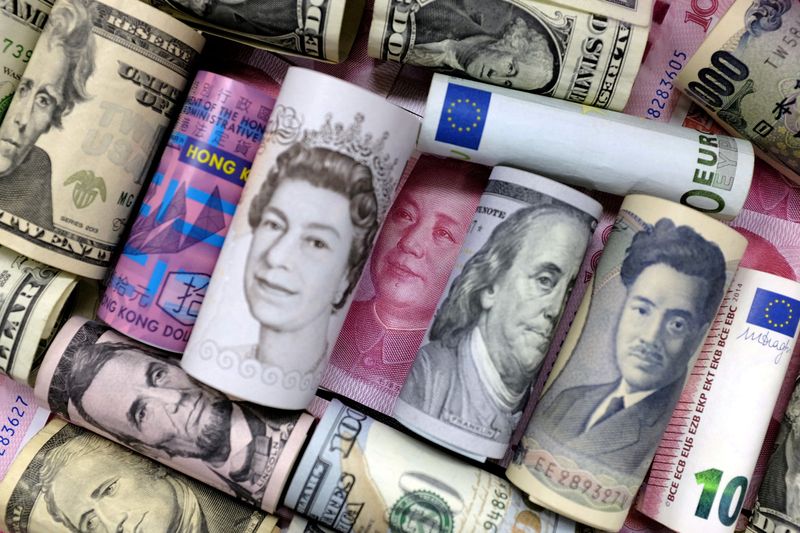By Rae Wee
SINGAPORE (Reuters) -The euro rose on Monday after the first round of France’s snap election put the far-right in pole position, though by a smaller margin than projected, while the yen struggled to break away from a near 38-year low.
Marine Le Pen’s far-right National Rally (RN) party won the first round of France’s parliamentary elections on Sunday, exit polls showed, although analysts noted the party won a smaller share of the vote than some polls had initially projected.
The euro, which has fallen some 0.8% since President Emmanuel Macron called the election on June 9, was last 0.4% higher at $1.0756, after having touched two-week top earlier in the session.
“They (RN) have actually performed a little bit worse than what was expected,” said Carol Kong, a currency strategist at Commonwealth Bank of Australia (OTC:).
“As a result of that, we saw the euro rise modestly in early Asian trade just because we might actually get less fears of more expansionary and unsustainable fiscal policy if the far-right party did a little bit worse.”
The rise in the euro sent the dollar a touch lower against a basket of currencies, though the greenback was also reeling from data on Friday that showed U.S. inflation cooled in May, cementing expectations the Federal Reserve will begin cutting interest rates later this year.
Market pricing now points to about a 63% chance of a Fed cut in September, as compared to a 55% chance a month ago, according to the CME FedWatch tool.
Against the dollar, sterling
The New Zealand dollar edged 0.12% higher to $0.6098. The was last 0.11% lower at 105.61, having earlier hit a one-week trough.
“Should inflation continue to behave itself, and incoming data fall in line with the FOMC’s forecasts, through the summer, the first 25bp cut remains on the cards as soon as September,” said Michael Brown, senior research strategist at Pepperstone.
UNDER PRESSURE
The yen struggled to gain ground against a broadly weaker dollar and was last 0.1% lower at 161.03 per dollar, standing just a whisker away from a 37-1/2-year low of 161.27 hit on Friday.
The Japanese currency had reversed early gains in the session following revised data that showed its economy shrank more than initially reported in the first quarter.
Separate data on Monday also showed the business mood in Japan’s service-sector soured in June as the lower yen pushed costs higher, offsetting a big lift in factory confidence and pointing to consumption weakness.
The yen has already fallen more than 12% this year as it continues to be weighed down by stark interest rate differentials between the U.S. and Japan, with its latest decline to the weaker side of 160 per dollar keeping investors on heightened alert for any intervention from Japanese authorities to prop up the currency.
Elsewhere in Asia, the Chinese yuan – also a victim of stark interest rate differentials with the U.S. – fell a marginal 0.04% to 7.3204 per dollar in the offshore market.
The last stood at 7.2679 per dollar.
The Chinese currency drew some support from a private sector survey which showed factory activity among smaller Chinese manufacturers grew at the fastest pace since 2021 thanks to overseas orders.
That came after official data over the weekend revealed China’s manufacturing activity fell for a second month in June while services activity slipped to a five-month low.

“The PMIs for June were mixed but on balance suggest that the recovery lost some momentum last month,” said economists at Capital Economics.
“We think economic activity will continue to hold up relatively well in the coming months. While the latest property stimulus has done little to boost new home sales, fiscal stimulus and strong exports should continue to support growth, at least in the near term.”